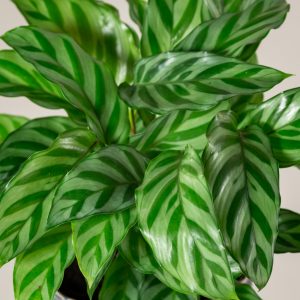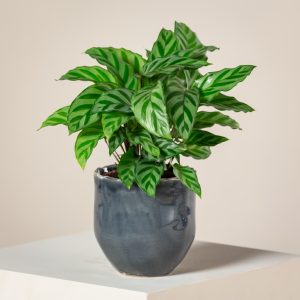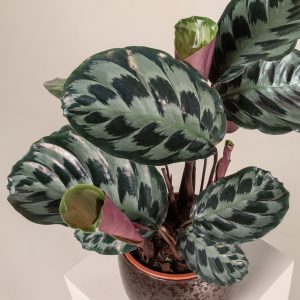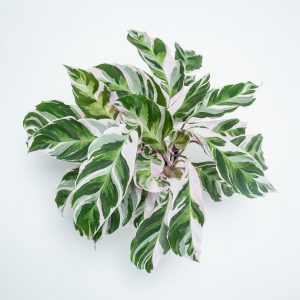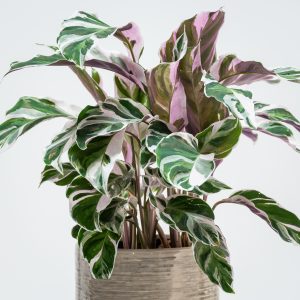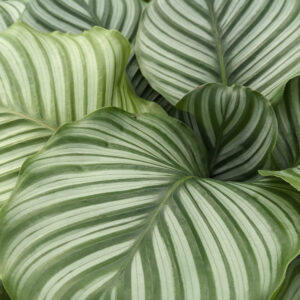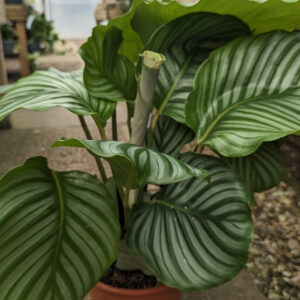The Calathea plants are part of a family called Marantaceae which contains about 50 species, and dozens of cultivars.
They come from the tropical areas of South America and it contains three genera: Calatheas, Maranta and Stromanthe. Due to habitat destruction, some of the species are threatened with extinction.
They can seem a high-maintenance choice at first, because they require the perfect combination elements. They thrive best when provided with tropical forest like conditions: warm, moist, gentle airflow, and a bit of fertiliser. But when you set up the best conditions from the start and understand how to care for this plant, it will fairly easy to maintain it.
Plants that are kept too cool or too dry are likely to lose their leaves or suffer from fungal infections that will cause the plant to die from root rot or collapse. Plants that are exposed to too much sun are likely to become washed out and develop brown blotches on their leaves.
Calathea plants are considered non toxic to people or pets, except in cases of allergies.
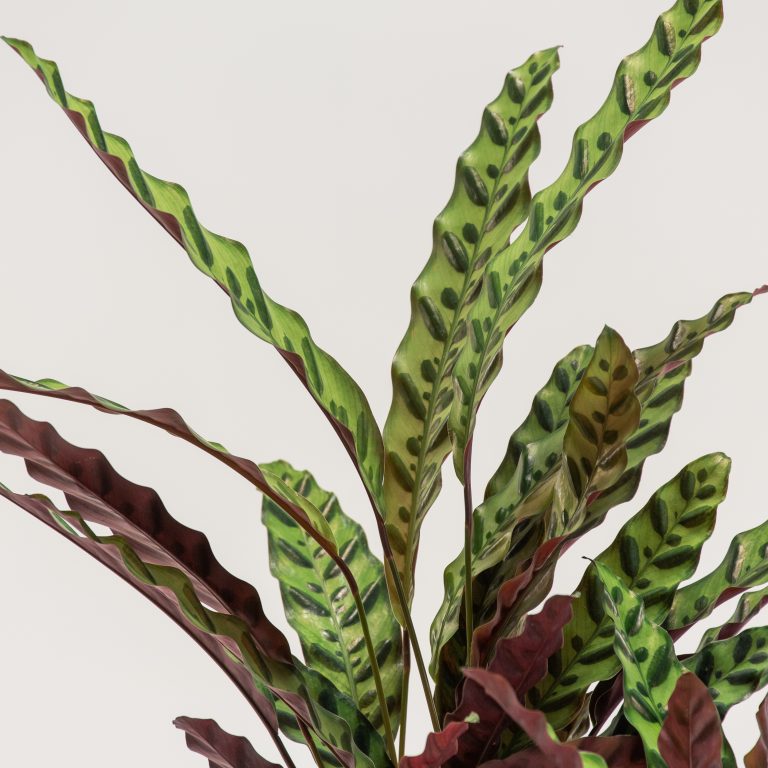
Why Prayer Plants 'Pray'
Most members of the Marantaceae family will characteristically ‘pray’, folding up at night before re-opening again as the morning sun rises.
At the base of each leaf is a joint-like thickening called the pulvinus, which swells and shrinks in response to pressure developed in the leaves. This is what enables the ‘praying’ to take place.
This movement of the leaves is a process known as nyctinasty, which serves a number of purposes. It allows the plant to absorb as much light as possible in its low light rainforest environment, helps to absorb and retain water, and reduces the risk of fungi and bacteria forming on their leaves.
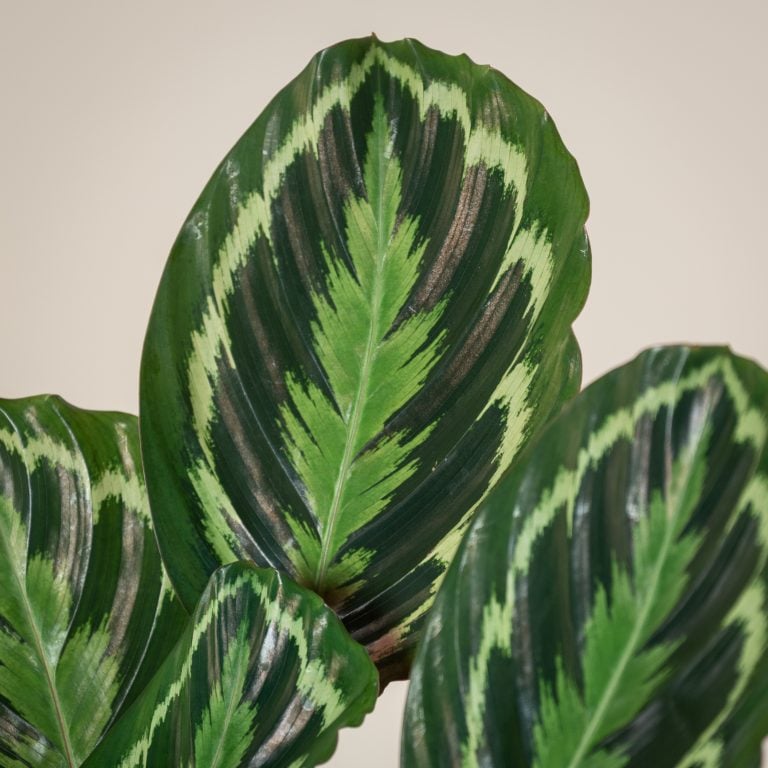
General care
Mist the leaves to ensure that all sides of the plant receives humidity and moisture. When the leaves get dusty, clean them with a damp cloth or wash the dirt off under a tepid shower.
Remove any yellow leaves to keep your plants strong and growing.
Do not use leaf shine products on Calatheas. The oils in the leaf shining products will clog up the pores making it impossible for the plants to breathe.
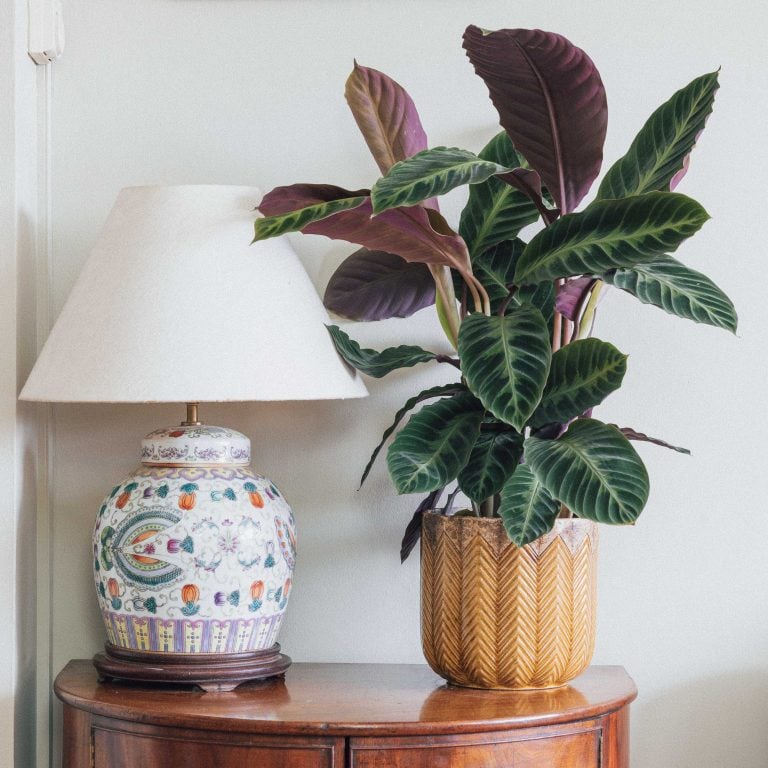
Positioning
When choosing a place for the plant, try to recreate the environment where they are naturally found: the floor of tropical forest. These plants are some of the species that will enjoy partial or even a full shade.
A good position for them are rooms that are naturally humid like bathrooms and kitchens, with indirect light. Avoid having the plant next to a window, and prefer corners. They also prefer to be kept away from drafts.
Intense light can make the patterns on the leaves fade. If this happens, move the plant to a shadier spot. Also, check for spider mites, since they also sometimes cause fading of the leaves.
In rooms where the humidity is low, and especially in winter times, spraying the leaves with distilled water will both help to clean the built up dust and also create a micro-climate around the plant that is much more humid than the rest of the house. In winter time, a cold humidifier can also help raise the moisture levels.
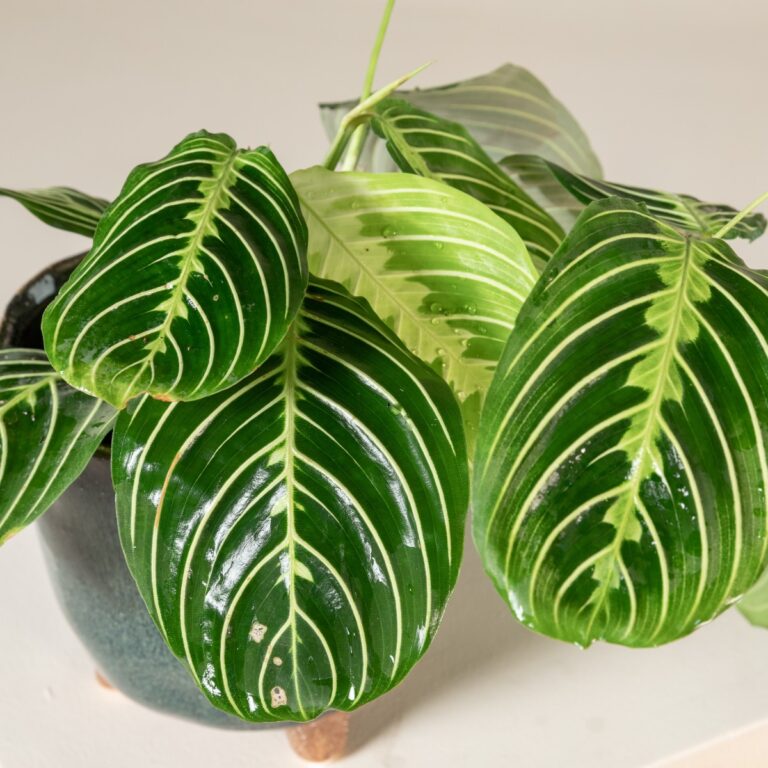
Watering
Prayer plants prefer a moist soil, however you should be careful about over watering. They are really sensitive plants, and even though they prefer high humidity, having roots sitting in water will kill them immediately.
Water as soon as the first inch of the soil feels dry to the touch. Water using either distilled, rain, or filtered water. Avoid using tap water, as the dissolved lime scale in the water tends to build up in the soil.
Water temperature is also quite important. Like many plants, prayer plants prefer lukewarm water. Cold water will shock their roots and can kill them easily.
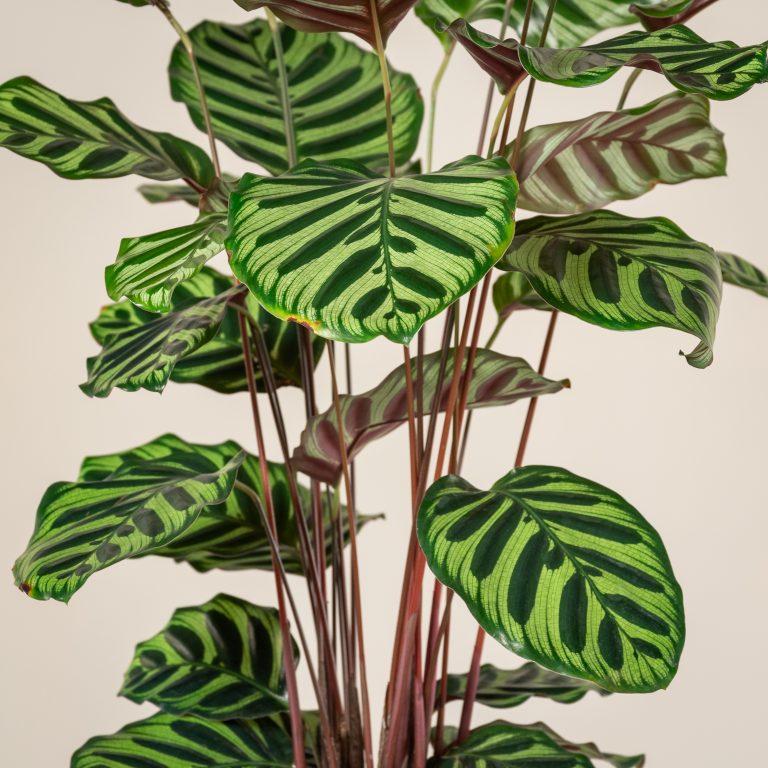
Feeding
In their natural environment, prayer plants are growing constantly, without having to deal with a dormant period. In our homes, the seasonal changes also influence the way the plants grow.
Feed from March to October. Use a mild liquid fertiliser twice a month, diluted to half the strength indicated on the label. The plants roots get burned easily by high concentrations of minerals in the soil. Excess fertilisation or mineral build-up in the soil turns the tips of the leaves brown.
Flushing the pot with distilled water will reduce the mineral build-up and allow the roots to develop normally.
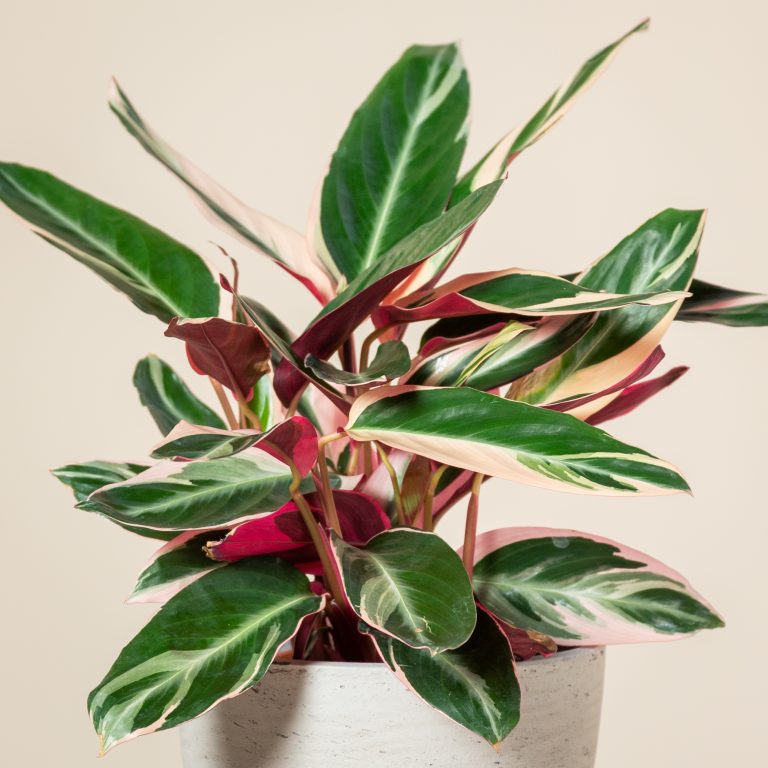
Soil
The rhizomes of Calathea plants are shallow rooted so, so they will tend to spread rather than go down in the soil. A peat-free indoor compost is the best option for them. However, a more sustainable solution can be combination of water-retaining coco coir, potting soil, and drainage-increasing perlite should work well.
Keep the plant in a pot that has drainage holes.
Though it’s not usually necessary to repot the plant when you get it home, if you do, then use a high humus indoor compost and repot in plastic nursery pots, which can then be placed in a decorative cover pot.
Avoid porous pots like terracotta, as they will draw moisture from the soil.
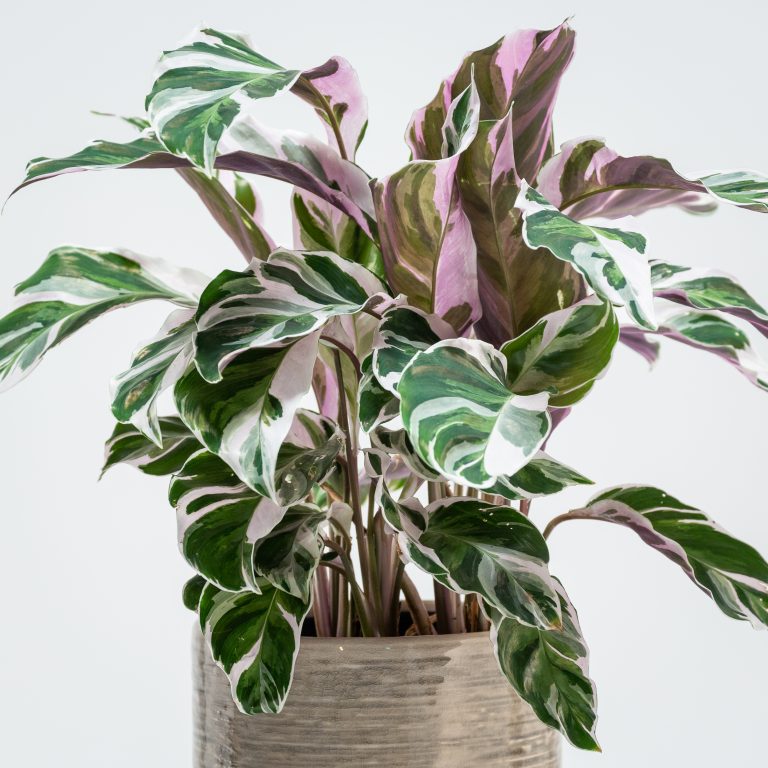
Propagation
Mature clumps of Calathea can be propagated by division at repotting time. Keep new divisions warm and moist by covering the pot with plastic and providing reduced light until active growth starts again. The plant should be repotted every couple of years or every other year into fresh potting mix and in a slightly larger pot if necessary.
Propagation can be done using cuttings from the main plant. Take 6 inch stem cuttings and root them in a 50% mixture of peat free compost and sharp sand.
Keep cuttings in a warm and very humid place such as a greenhouse until they have rooted.
